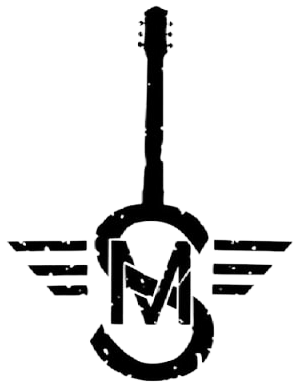What is the difference between a single-phase motor and a split-phase motor?
The auxiliary winding of a permanent-split capacitor motor has a capacitor in series with it during starting and running. Single-phase motors don’t create a magnetic field on their own, so they must be switch activated in order to make the rotor move.
Why is it called a split-phase motor?
In a split-phase induction motor, the starting and main current get split from each other by some angle, so this motor got its name as a split-phase induction motor.
What is an advantage of a split-phase motor?
The split-phase motor’s simple design makes it typically less expensive than other single-phase motor types for industrial use. However, it also limits performance. Starting torque is low, typically 100 to 175% of rated load. Also, the motor develops high starting current, approximately 700 to 1,000% of rated.
What are the 4 types of single-phase induction motor?
Types of single phase induction motors
- Split-phase motor.
- Capacitor-start motor.
- Capacitor-start capacitor-run motor.
- Permanent-split capacitor (PSC) motor.
- Shaded-pole motor.
What is a single-phase split-phase motor?
A split-phase induction motor is a type of single-phase induction motor in which the stator is provided with a starting or auxiliary winding (S) and a main or running winding (M). The starting winding is displaced by 90° from the main winding as shown in the figure.
What are the three basic types of split-phase motors?
1. Resistance-start, induction-run motors 2. Capacitor-start, induction-run motors 3. Capacitor-start, capacitor-run motors 4.
What is the principle of split-phase motor?
Working Principle
As the rotor bars are short-circuited, a current flows through them producing a magnetic field. This magnetic field opposes the revolving magnetic field and will combine with the main field to produce a revolving field.
Does a split-phase motor need a capacitor?
In addition to capacitor start motors, two other single-phase induction motor designs that do not require a capacitor to generate a starting torque are the split-phase induction motor and the shaded-pole motor.
Does a split-phase motor have a capacitor?
A split-phase motor has no capacitance in the auxiliary circuit. A phase shift with respect to the main current is achieved by using narrow conductors to achieve a high resistance to reactance ratio.
Does a split-phase motor have a centrifugal switch?
A centrifugal switch is an electrical switch normally found in signal phase induction motors and split-phase induction motors. This switch is used to provide a controlled switching operation that is required in the engine when the specified engine speed is generated.
What is the difference between split-phase and single-phase?
Single phase power systems are defined by having an AC source with only one voltage waveform. A split-phase power system is one with multiple (in-phase) AC voltage sources connected in series, delivering power to loads at more than one voltage, with more than two wires.
What type of motor is a split-phase motor?
single-phase induction motor
A split-phase induction motor is a type of single-phase induction motor in which the stator is provided with a starting or auxiliary winding (S) and a main or running winding (M). The starting winding is displaced by 90° from the main winding as shown in the figure.
Why do split-phase motors have low starting torque?
A split-phase motor has significantly lower torque at starting than any of the capacitor motors due to the reduced phase angle between main and auxiliary winding currents.
What are the 3 basic types of capacitor motors?
Permanent-split capacitor motors are available as single-, two-, or three-speed machines.
Does a split-phase motor have a start winding?
How does a split-phase motor work?
A split-phase motor has no capacitance in the auxiliary circuit. A phase shift to the main current is achieved by using narrow conductors to achieve high resistance to reactance ratio. Increasing the resistance means that the auxiliary winding can only be used during starting, otherwise, it would overheat.
What are the 3 basic types of split-phase motors?
What is the working principle of split-phase?
Can a motor run without a capacitor?
Answer: There are three common types of single-phase motors named capacitor motor, shaded pole motor and split phase motors. Shaded pole and split phase single-phase motors do not require a capacitor to run.
Why is there 2 capacitor on a motor?
Single-phase induction motors that have two capacitors have a higher torque capability when starting and accelerating. The starting capacitor is larger and thus allows a higher current in the starting winding and a greater phase shift of the current in that winding.
Why capacitor is used in motor?
Capacitors are used to reduce interference and noise in DC motor. Capacitors reduce the spikes in the motor current and reduces the magnetic interference.
What is torque of a motor?
Torque relates to the rotational force of an electric motor while speed refers to the rate that the motor can rotate. This means that torque is associated with rotational force while speed relates to the rate of rotation which can be calculated by examining the RPMs, or revolutions per minute.
What is rpm and torque?
RPM stands for revolutions per minute. The basic understanding of this is the calculation of any object revolving in a circular motion around its orbit. On the other hand, Torque is a form of measure that determines the amount of load of a vehicle at any given point of time.
How do I calculate rpm?
How to Calculate Motor RPM. To calculate RPM for an AC induction motor, you multiply the frequency in Hertz (Hz) by 60 — for the number of seconds in a minute — by two for the negative and positive pulses in a cycle. You then divide by the number of poles the motor has: (Hz x 60 x 2) / number of poles = no-load RPM.
What is Max torque?
Maximum torque means the highest value of the net torque measured at full engine load.
